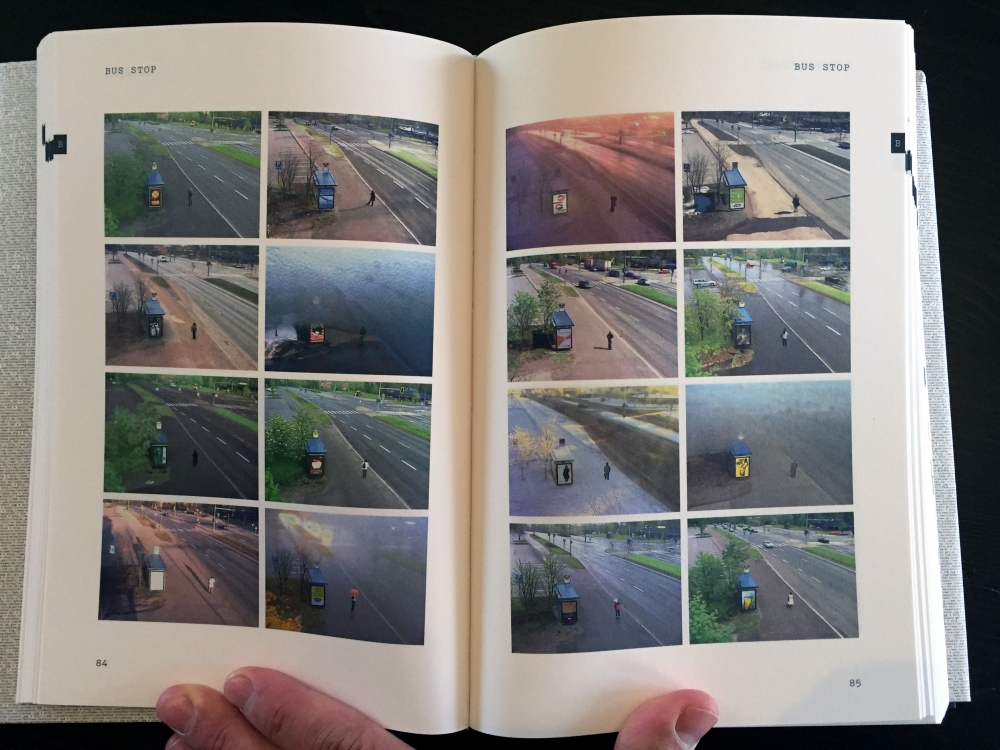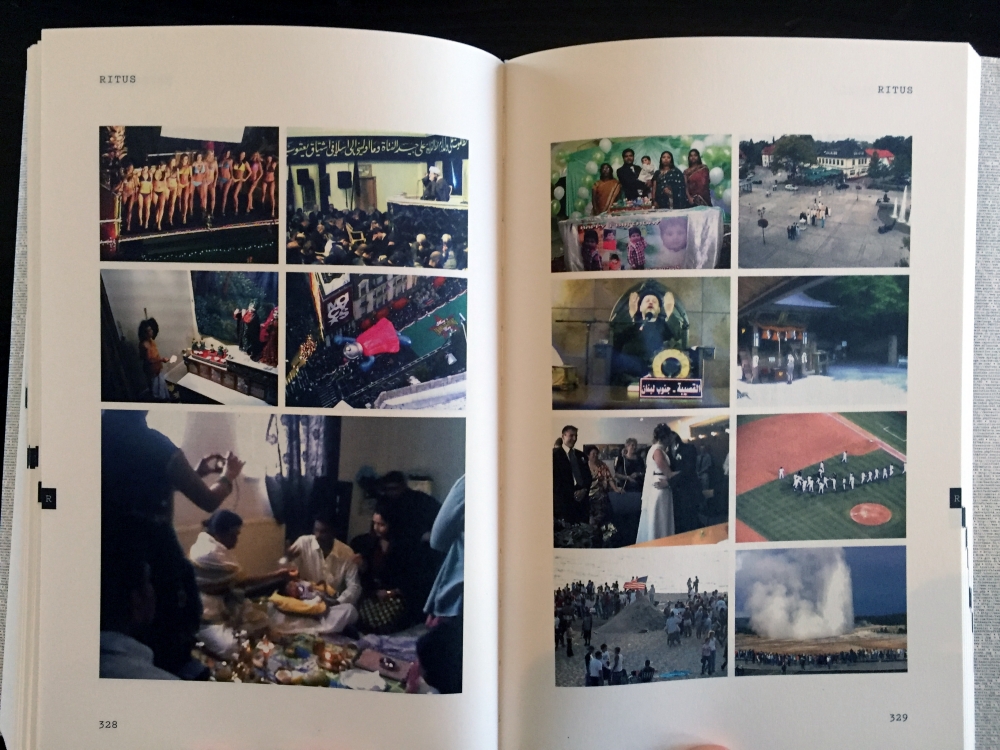Watching the Web: Kurt Caviezel

The Encyclopedia of Kurt Caviezel is comprised of screenshots selected out of an archive that Kurt Caviezel collected from around 15000 webcams over the course of 15 years. These have been organized into encyclopedic categories based on matching content (Pool, Bird, Kiss) or formal features (Black Sun, Error). Sometimes a single image stands out, but a lot of the work’s impact has more to do with repetition and the recognition of patterns between pictures.

There is an essay at the beginning of the book by Joachim Schmidt, who also makes great work with archival images, and he makes a key point about what distinguishes this work from others where found pictures are sequenced in new contexts and makes it particularly interesting to me as I continue to learn about technology and think about how artists can engage with a software-oriented, data-saturated society.
"Through years of camera surveillance the artist has compiled a virtually unreal amount of images, which have all been harvested from webcams. The quantity of images is of crucial import here, because quanitity (as is the case with many collections of things) at some point turns into quality. Only abundance enables the detection of recurring patterns. May the single image be just funny or banal or vacuous, in a series of similar ones it becomes a building block of knowledge."
More traditional photographic methods (like just taking lots of pictures) can also be approached as processes of gathering data in the form of images. Even in the darkroom we talk about how a larger negative will hold more information than 35mm film, and dodge and burn to ensure that what captured details are rendered fully in every area of the print.
This book involves a search for details at a different scale from what we are accustomed to seeing in art or documentary pictures that guide us into individual frames or through story-like sequences. As Schmidt points out, this work is all about the large amount of pictures (data) that have been collected and organized into arbitrary categories, some of which seem to poke fun at the very idea of classifying anything so rigidly.

These pictures were each individually captured and categorized. Caviezel found a way to interact with the Internet, this virtual element which is enmeshed now in our real world, as one might photograph in a physical space. He sat with the patience of any portraitist, examining distant broadcasts as others might a live sitter’s face, deciding what to keep, and the images he found are fascinating (partly because it seems so odd to see them, so many are so mundane that you wonder ‘who thought to put this camera up here?’), but the assembled collection implies the vastness of the network (which seems to be, based on these samples, quite mundane) as individual pictures cannot.
More info: